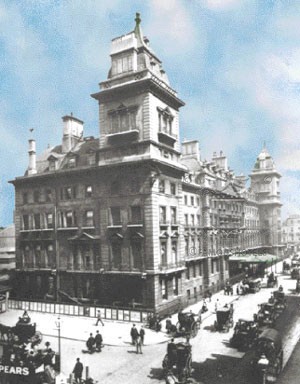

Great Western Royal

Today known as the Hilton London Paddington, this hotel is something very special.
Allow me to take you back in time, when a man had a dream: to travel from New York to the heart of London. Sound odd? Well, not if you’ve heard of Isambard Kingdom Brunel. In March 1833, 27-year old Brunel was appointed chief engineer of the Great Western Railway. He was born into one of the most exciting periods of history. His father was an engineer and young Isambard choose to follow in his footsteps. He was 19 when, on 27 September 1825, large crowds saw George Stephenson at the controls of his steaming Locomotion as it pulled 36 carriages along the Stockton & Darlington railroad. Modern railway travel had been invented. Brunel knew he wanted to be involved in building everything related to it. The aim of the Great Western Railway was to create a link between London and Bristol, England’s innovative city on the western coast of the island. From here, its charismatic chief engineer Brunel imagined, they would take the railway passengers on Great Western Railway ships across the Atlantic to America. And bring American passengers back to London, where they would be greeted by the open arms of Paddington Station, the terminus of the Great Western Railway. Here, Brunel foresaw, the finest hotel of their journey would be waiting to become their home away from home. The Great Western Royal. What used to be most pratical - a hotel right at Paddington Station - is even better today: a hotel at the beginning of each journey via Heathrow. The Express departs right at the hotel and takes you to the airport in 15 minutes.
And now — fast forward: only recently (in comparison) a woman had a dream: Gulshan Bhatia bought the hotel and brought it back to life. All details under "Legendary Stories".
Andreas Augustin

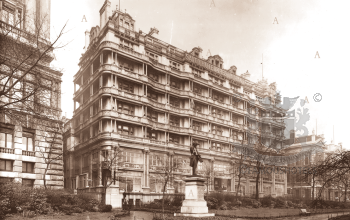
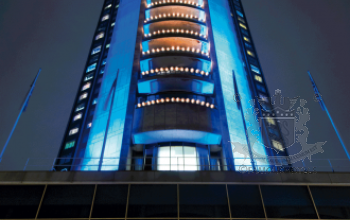
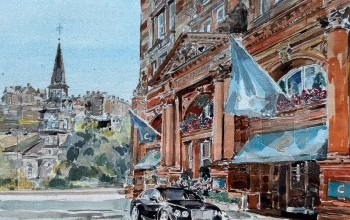
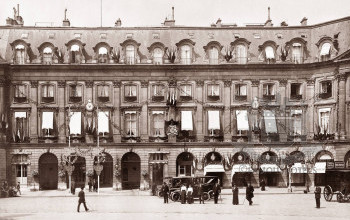

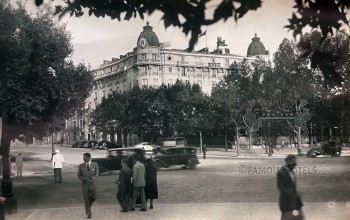
Forgive us for being rather detail-heavy on this one, but that’s the way we work. You will find below a brief summary of the hotel’s main dates and below that a detailed history for those interested in finding out more about the history of the hotel, the railways connected to it, and about politics and society more generally. How the Stage was Set HISTORY IN BRIEF 1854: The Great Western Hotel opens at Paddington 1896: Great Western Railway (GWR) takes over the management of the hotel. It becomes the headquarters of the company’s catering department. 1986: Gulshan Bhatia buys the Great Western Royal Hotel in Paddington 2002: The new Hilton London Paddington opens its doors, with Neil Mathieson at its helm. HISTORY IN DETAIL 1819: Queen Victoria is born 1820: Florence Nightingale is born 1826: First photograph taken by Joseph Nicophore Niepce. 1829: Catholic Emancipation, ending most denials or restrictions of Catholic civil rights, ownership of property, and holding of public office. 1833, March 7: Brunel joined the G.W.R (the Great Western Railway ) at Bristol to bring the railway in from London . He was not at all a stranger to Bristol. His plans to build the Clifton Suspension Bridge and harbour improvements had been accepted but there was not enough money in the city to start building. Until Victorian Times travelling anywhere was uncomfortable, and very slow. The vehicles were horse drawn, the carriages travelled on rough, uneven and muddy roads. The roads had to follow the lie of the land so if a steep hill was in the way the road went round it, which made the journey longer. The arrival of the railway was to change land travel dramatically as the table on the next page shows. By August 1833 he had produced his plans for the railway and the estimated cost was £2,805,330.It took 2 years of a long hard argument in parliament, but at last on the 31st August 1835 the Bill for “the line laid down by Mr. Brunel” from Bristol to London with stations at Bath, Chippenham , Swindon, Maidenhead and Reading with branch lines to Trowbridge and Bradford on Avon it received the Royal Assent. The railway is 118 miles long and it took 6 years to lay. The hardest part was the 2 mile long tunnel at Box between Bath and Chippenham. It took 5 years to dig ,1 year longer than had been planned and when the 2 tunnels from each side of the hill met, they were only 1 and a quarter inches out from each other even though the tunnel was built with a deliberate bend in it. The tunnel was another first for Brunel because it was the longest tunnel in the country when it was finished. On 30th June 1841 the directors of the Great Western Railway left London and made the first train journey to Bristol in 4 hours. During the next 20 years the Great Western Railway expanded so quickly that it covered almost the same area as it did 100 years later. It reached Weymouth in the south, most of Devon and Cornwall, South Wales and reached into Birmingham and the Midlands through, Cheltenham and Gloucester from Swindon. 1834: Slavery banned in British colonies. 1835: The act for the building of the railway has been passed, the line opened as far as Taplow near Maidenhead in 1838, reaching Bristol in 1841. It was to remain the grandes railway in England. Until 1892 the G.W.R. used the 7 ft broad gauge, devised by its great ingeneer Isambard Kingdom Brunel. The GWR 1835-1841: Brunel builds London to Bristol railway for GWR. A word on Swindon: The hometown of the members of XTC, was the main junction of the Great Western Railway (GWR). The fame and importance of the railway was such that it was nicknamed "God's Wonderful Railway". The GWR's first section was opened from London to Taplow in 1838. The line was completed to Bristol in 1841 ... By the juction at Swindon, then a small market town, was established the Great Western Railway's locomotive works. Swindon was expected to be the place at which trains would change engines ... the works remained at Swindon and went on to fame. (Source: P.J.G. Ransom, The Archaeology of Railways, 1981, pp.64-65) Phil Hetherington writes: The GWR was Swindon, basically. Swindon Works was where the GWR built pretty much all of its locomotives for many years (and probably the coaches and goods wagons, too), as well as doing all of the major overhauls and so on. For several decades, the Works was Swindon's main employer, so its importance cannot be emphasised strongly enough. (See also "place of former employment" on Colin's map of Swindon in Go 2.) This importance continued long after the formation of British Railways in 1948, as the GWR had always been a fiercely independant company and this continued long after nationalisation. Swindon Works continued to build locomotives, in fact the last steam locomotive to be built by BR was built there in 1960. I'm not sure exactly when the Works closed, I think it was during the '80s but I may be wrong. It may still have been open when the album was made, but the writing would have been on the wall even then. Regardless, the run-down and closure of the Works must have been a disaster for Swindon, in terms of the town's heritage as well as employment. (Source: the Chalkhills FAQ.) The GWR's first locomotive was the North Star, and they later built two famous classes of engine, Castles and Kings. The locomotive that the band leans on in the inner sleeve of The Big Express, #2516, is in the GWR Museum, Swindon. This engine is one of the '2301' class 0-6-0 Dean standard goods (or "Dean Goods"), originally introduced in 1883 as a main line freight engine; and developed over the years to be an outstandingly successful light goods and branch line passenger engine. Some of these engines put in nearly 80 years of service. (Source: O.S. Nock, The Railway Enthusiast's Encyclopedia, 1968, p.76) Swindon Swindon is the home town and place of residence of the members of XTC. It lies about 80 miles (130 km) west of London, and has a population of about 200,000. Taking its name from "Swine Down" (literally "Pig Hill"), Swindon had been mentioned in the Domesday Book of 1086, but 750 years later its population was still below 1800. All that changed almost overnight when the Great Western Railway (GWR), initially linking London and the port of Bristol, opened in June 1841. Engineer-in-Cheif Isambard Kingdom Brunel appointed Daniel Gooch as his Locomotive Superintendent, and the two great men decided to situate an "engine establishment" in the green fields just to the north of the sleepy town on the hill. Swindon Works opened in 1843 and quickly progressed from repairing locomotives to building new ones, then to manufacturing carriages, wagons, rails... in fact everything the railway needed. Within 50 years, Swindon was claimed to be the largest railway workshops in the world. At its peak, the Works employed more than 14,000 men and churned out a new steam locomotive every three days, a carriage every day, and a wagon every hour. Even so, it is for quality, rather than quantity, for which Swindon is famous throughout the railway world. The GWR dominiated the town and every aspect of the lives of its inhabitants for a hundred years, but following the Second World War, Swindon Works slipped into a long and slow decline. With admirable foresight, the Borough Council began a drive to attract more varied industries to the town. By the time the railway works finally closed in 1986, such was the turnaround that Swindon was claimed to be the fastest growing town in Europe. Swindon is now home to a large number of national and international companies, and its strength lies in the diversity of business situated in the town. Ironically, the phoenix of the old railway works is rising from the ashes. The recent opening of a 100-shop "Designer Outlet Shopping Village" on the site, and an 8.7 million pound grant from the National Lottery Fund for a Railway Heritage Centre nearby will hopefully ensure that Swindon's proud railway tradition will continue to be recognised well into the next century. 1837: Queen Victoria comes to the throne.
Charles Dickens 1837: Charles Dickens 1812-1870, England's most popular author publishes Pickwick Papers - instant fame. 1842: Dickens went to America and lectured in favour of international copyright, which meant that authors would get paid when their books were published in another country . He also campaigned for the abolition of slavery, (slavery had been banned in British Colonies in 1834). He returned home and continued his writing, he published many more novels in instalments: Oliver Twist 1837-39 Nicholas Nickelby 1838-39 Old Curiosity Shop 1840-41 Barnaby Rudge 1841 Martin Chuzzlewit 1843-44 A Christmas Carol 1843 The Chimes 1845 The Cricket on the Hearth 1845 Dombey And Son 1846-48 David Copperfield 1849-50 Bleak House 1852-53 Hard Times 1854 Little Dorrit 1855-57 A Tale of Two Cities 1859 Great Expectations 1860-61 Our Mutual Friend 1864-65 Mystery of Edwin Drood (incomplete)1870 1838: During his career Brunel built 3 ships that were very important in the history of ocean travelling as each one was a first of its kind. Brunel built a paddle steamer called the Great Western which was the first transatlantic passenger steamship in regular service. It made the Bristol- New York crossing in an amazing 15 days. 1838: Charles Dickens publishes Oliver Twist. Brunel builds the paddle steamer The Great Western (made the Bristol New-York crossing in under 15 days). 1840: Queen Victoria marries her cousin Prince Albert. Penny post instituted. 1843: Charles Dickens publishes A Christmas Carol. 1844: Potato famine begins in Ireland. 1845: Brunel built the SS Great Britain which was the first propeller driven oceangoing steamship. This ship was rescued from the Falkland Islands near Argentina in the 1960s and has been restored in the very same dry dock in Bristol that it was built in. It is now a museum and I have been to see it. 1845: Brunel builds the S.S Great Britain -first propeller driven steamship ever. 1848: Karl Marx and Frederich Engels publish the Communist Manifesto. 1849: Charles Dickens publishes David Copperfield. 1850: A hotel for travellers, the Prince of Wales, was opened next to the temporary station before 1850. Its success induced a group of G.W.R… Co. Shareholders and officials to build the Great Western (later the Great Western Royal) hotel at the southern end of the second station, where it masked the train sheds. The Prince of Wales Hotel remained in operation until 1952, owned from 1947 by Cope’s Tavern. The former Warrington Lodge nursing home was opened as Esplanade hotel in 1936 and under the management of Austrian emigrés, offered a temporary home in 1938 for Sigmund Freud. 1850: The opening of the railway terminus gave raise to many small hotels and boarding houses in Paddington. 1850-4: Brunel, together with Matthew Digby Wyatt (architecture) and Owen Jones (decoration), designed the Paddington station 1851: Great Exhibition of 1851- the Crystal Palace was built to house this exhibition - 6 million tickets were sold. 1851-4: The story of hotels is closely linked with the development of the British railway system. With the planning of the Great Western Royal Hotel at Paddington, West London got one of the really ambitious railway hotels. It brought an early introduction of a French Second Empire Frontage. Architect P.C. Hardwick. It was built by the directors of the G.W.R. between 1851–4, with the influence of French Renaissance and Baroque, with a curved roof over the centre and over the taller end pavilions. Central pediment was by John Thomas, illustrating Peace, Plenty, Industry and Science, a crushingly Victorian programme, in stucco, although stone was originally intended. . . .the GWR was much more ambitious than any other station hotel before, with 115 bedrooms and 15 sitting rooms above the public rooms on the ground floor. The main staircase still has its original decorative iron balusters. 1853: Crimean war breaks out. 1853: Paddington built itself a beautiful vestry-hall to transact the important business of this parish. On P general: Paddington has 46,345 inhabitants, the village of Paddington was once given to Westminster Abbey, and afterwards by Edward VI. to the Bishop of London and his successors, has become one of the most remarkable portions of London. The story of its growth sounds like a fable. In 1801 it contained 357 houses, and a population of 1,881 persons. 1851 there were 6,519 houses and 46,306 persons. William Robins („Paddington Past and Present“) remarked: „A city of Palaces has sprung up on a bishops estate within twenty years: a road of iron with steeds of steam brings into the centre of this city and takes from it, in one year, a greater number of living beings than would be found in all England a few years ago. The electric telegraph is at work by the side of this iron road. And by means of conveyances, open to all who have any small change, from sixpence to a penny, the whole of London can be traversed in half the time it took to reach Holborne-bar at the beginning of this century when the road was in the hands of Mr. Miles, his pair horse coach, and his redoubtable Boy (who told tales to the great amusement of his master’s customers and played on an old fiddle to beguile the time at every resting place on the road). This coach and these celebrated characters were for a long time the only appointed agents of communication between Paddington and the City. The journey to the City was performed by them in something more than three hours, the charge for each outside passenger being 2s, the ‘insides’ being expected to pay 3s. 1854: Florence Nightingale goes to Crimea to organise nursing during the war. 1854: The Victorian History of the Counties of England. The Great Western Hotel opened at Paddington. Well-publicised as London’s largest and most sumptuous hotel, it was mainly the work of architect C.P. Hardwick, although nominally that of his father Philip. A stucco-fronted block of 5 storeys with 7 storey corner towers, it is perhaps the earliest Victorian example of the influence of French Renaissance and Baroque, notably the lines of the roof; a central pediment contains allegorical figures by John Thomas. 1854: The hotel indeed forms the facade of the station, but was not part of the G.W.R.. Money had been raised to build the hotel by a section of the Great Western board in 1854, but they formed a separate company to administer its affairs. Brunel was a Director of the Hotel company for a time and the Hotel became part of the GWR in 1896. The GWR was not itself involved in catering until 1891. When they took over the Royal Hotel in Paddington they transferred the headquarters of the catering department there, but the organisation was not sufficiently mature to undertake the catering on the first restaurant cars which the company ran in 1898. The contractors holding the Paddington station refreshment rooms, Browning and Wesely, catered for the company. The firm had 23 rooms all over the Great Western system, mainly in the West Midlands and north to Birkenhead. 1856: Crimean war ends. 1858: Brunel built the Great Eastern and it took 5 years to build. It had a displacement* of 22, 500 tons, a length of 693 FT, a width of 120 FT, and a depth of hull 58 FT. It was designed to make a round trip to Australia, going past the Cape of Good Hope without being recoaled. It was designed like this because 5 years before in 1853 directors concluded that, because of the cost of maintaining coaling stations on the way, such a route would not pay unless the ships could carry enough coal for the voyage out and home. The Great Eastern is best remembered as the ship that laid the first successful telegraph cable across the Atlantic Ocean as well as several other cables which greatly improved communications with the United States. The ship was eventually scrapped in 1889. All of Isambard’s ships had a mix of sails and engines. That was so that on days when there was no wind they had an engine to power them and on windy days they could turn the engine off to save the amount of fuel used. They could also use them both at the same time so they could go faster. 1858: Brunel builds the Great Eastern the biggest steamship of ist time. 1859: Charles Dickens publishes A Tale of Two Cities based on the French Revolution of 1859: Brunel dies - death caused by overwork and worry. 1859: Charles Darwin publishes Origin of Species - first edition sells out in one day - amid raging controversy. 1860: Florence Nightingale publishes first ever definitive textbooks on nursing. 1860: Charles Dickens publishes Great Expectations - considered by many to be his finest novel. 1861: Prince Albert dies of typhoid fever aged 42. 1861-1865: American Civil War. 1863: The Langham in Portland Place, an ever grander Italianate palazzo, by Gilles & Murray, sets new standards for aristocratic guests. 1865: American President Abraham Lincoln is assassinated. 1867: Disraeli introduces a law so that all taxpayers can now vote. 1868: Disraeli becomes Prime Minister for the first time but is only in post for several months - defeated in election. Below are some of his important achievements as Prime Minister: * He changed the laws to improve housing and working conditions. * He protected and increased the British Empire. * He borrowed £4,000,000 to purchase for the government the shares in the Suez Canal that were owned by the Khedive of Egypt. * In 1876 he created the title Empress of India for Queen Victoria and in turn she created him 1st Earl of Beaconsfield. * He took part in the 1878 Congress of Berlin which redrew the boundariesof South Eastern Europe after the defeat of Turkey in the Russo-Turkish War. He deprived Russia of many of the advantages of victory and ensured that they did not gain any strategic advantages in the Mediterranean. 1868: Last shipment of convicts from England to Australia. 1869: Suez Canal built by Ferdinand de Lesseps - ship journey to Australia and Far East cut dramatically. 1870: Charles Dickens dies - strain of doing public readings hastened his death aged 58. 1874: Disraeli becomes Prime minister for the second time and governs until 1880. 1875: Disraeli buys Suez Canal Shares, gaining a controlling interest for Britain. 1876: Disraeli gives the title Empress of India to Queen Victoria. 1877: Telephones become available, invented by Scottish scientist Alexander Graham Bell. 1877: Thomas Edison invents the phonograph - he records and plays back- Mary had a little lamb. 1879: Electric light-bulb invented by U.S inventor Thomas Edison. 1881: Benjamin Disraeli dies. 1885: First automobile built by Karl Benz. 1888: Jack the Ripper murders terrify East End of London. 1893: New Zealand is the first country to give women the right to vote. 1894: Harrods, rebuilt from 1894 onwards by C.W. Stephens 1896: GWR takes over the management of the hotel. It becomes the headquarters of the company’s catering department. 1897-8 : Great Central Hotel, built to serve St. Marylebone station 1901: Queen Victoria dies. 1903: Only eight suburban trains arrive every day at Paddington, compared with 136 at Liverpool Street. 1907: The hotel had every new invention installed that was of use. There were telephones, an exchange that could put a guest in touch with any part of the world, and all was illuminated by electricity. By the use of a pneumatic tube, a telegram message could be sent.. Dining rooms with snow white damask table cloths and silver cuttlery on beautifully carved mahogany tables, each table with a silver vase of sweat peas, irises or lilies of the valley. 1922–4: The original cast iron columns at the station are replaced by riveted steel. 1936: 28 January, King George V’s funeral. His coffin was brought to the station before travelling by train to Windsor. 1936: Each year the GWR published a guide to all holiday destinations along their routes including a list of hotels and boarding establishments. Special ‘Holiday Expresses’ were run during early spring and late winter. In 1925 the advertising campaign was run aggressively under the motto: ‘See your own country first!’ 1936: The former Warrington Lodge nursing home was opened as Esplanade Hotel in 1936 and under the management of Austrian emigrés, offered a temporary home in 1938 for Sigmund Freud. 1940: June 1940 In the first few months of WW2 it was generally feared that German air attacks would concentrate on railway stations and tracks. The four major railways were instrumental in evacuating children from London to the saver country side. When France fell to Germany in June 1940 a second wave of children were sent through the major London railway stations. The Great Western special trains conveyed nearly 70,000 children. On 28 July 1940 140 tons of school property including furniture and classroom equipment were transferred through Paddington, following the children to their temporary exile. 1957: 4.50 from Paddington Jane Marple & Craddock. (Also known as What Mrs. McGillicuddy Saw!, Murder She Said.) 4:50 From Paddington 1962 Margaret Rutherford (Marple) 1986: Gulshan Bhatia buys the Great Western Royal Hotel in Paddington (see Legendary Stories). 1990: The facilities of the hotel were used for various events, including charities, balls and the regular press conferences of the nearby Football Association. The hotel became a secret tip for all admirers of a bygone time. The historic hall ways, the large rooms were among the hotel relicts that haven’t yet seen the light of modern times. The large suites, named after English rivers and of course after Mr. Brunel himself, proved to be an ideal setting for various TV series and video shots. Madonna had parts of a video shot at the hotel. Not only because of that – these happenings were not necessarily the driving force of a PR campaign – the room rates rose to £105 in 1999.
1996: In 1996 Paddington became the shortest link between the rest of the world and the centre of London. The Heathrow Express reduced the often over one hour trip to a mere 25–30 minutes, soon to achieve it in just 15 minutes. With such a rocket transfer under her feet, Gulshan Bhatia decided that it was time to move ahead faster, too.
1997: The Paddington Regeneration Partnership is established, consisting of major private sector investors, landowners and transport operators in Paddington.
2000: On the agenda of The Paddington Regeneration Partnership stands the Paddington Basin, Paddington Waterside Developments, West End Quay, Paddington Staion itself, the NHS and Imperial College proposal of major investments in health services at Paddington Waterside, the Canal Basin – recreating a lively waterspace reflecting the basin’s 200-year-old heritage including boat trips, swimming restaurants and water taxis. Heathrow: currently over 200 destinations served by over 90 scheduled airlines, having more than the population of the UK travelling through this gateway of England (61m passengers in 1999).
2002: The new hotel, named Hilton London Paddington, opened. Its first general manager is Neil Mathieson.
Current general managers are requested to update this listing! contact aa@famoushotels.org
The Great Western Royal, as it was called when it opened, was London's First Grand Railway Hotel at Paddington Station (1854).
+++++++++
On 24. September 1976 Gulshan Bhatia, an Indian politcal refugee from Tanzania, East Africa, reaches London. She and her family take up their permanent asylum in the city at the Thames River. After carefully monitoring the commercial opportunities their new hometown has to offer they decided to venture into tourism, into bed & breakfast, to be precise. A company shell was purchased, from the various names at offer Muirgold Ltd. sounded quite right. It hasn’t been changed ever since. With the aquisitstion of the small Convey Court Hotel their dream became true. ‘The family lived on the ground floor. We were not rich enough to afford a private home and a hotel. So we moved in.’ ‘I was only eight years old when I already served guests and worked for the hotel,’ remembers Asif, one of the sons (there are two more sisters) of Mrs. Bhatia. Today Asif Bhatia, BSc (Hons), MBA, has his very own hotel business and stands with both feet in the footsteps of his mother. ‘We worked very hard and we steadily raised the value of the premises. Eventually we sold it with a profit. We realized that we were good at doing exactly that and over the years we aquired more and more hotels. All together 25. All together hotels we developed and sold again. Most of them in Paddington. And there was always this giant hotel, loolming in the distance. ‘I always knew, one day I shall try to buy the Great Western Royal Hotel,’ Mrs Bhatia smiles. In 1986 ten million Pound Sterling were enough to do exactly this. The slightly deranged 3-star hotel changed hands, bought out of receivership. ‘Our guests loved it. Although it gave an overall tired impression, the rooms were so large that even clients from Texas were surprised. You know, the Lounge was an ideal rendez-vouz and today the number of couples who spent their first weeks or months dating each other at the GWR are countless.’ And it still was a Royal Hotel, too. The Princess of Wales, spent many hours at the hotel during a charity event (pix with Paul Follows and Mrs. Bhatia), Princess Anne attended a function. ‘We had 17 conferrence rooms and were the only hotel in Paddington to offer such facilities,’ remembers Mrs. Bhatia. Roomrates were at modest £40 per night.
++++++++++++
The stucco-fronted block of 5 storeys with its 7 storey corner towers formed the earliest Victorian French Renaissance building. It housed 165 bedrooms. Caryatides and at street level a heavily decorated ironwork porte-cochère covered the main entrance. Above, a central pediment contained allegorical figures, one of the favourite exterior devices of the time. In a confident Victorian manner, they represent ‘Peace, Plenty, Science and Industry’, created by the prolific sculptor John Thomas, whose statues and carvings also graced the new Houses of Parliament. ++++++++++
1987 Full Cast and Crew for 4.50 from Paddington (1987) (TV) Directed by Martyn Friend Writing credits T.R. Bowen Agatha Christie (novel) Cast (in credits order) Juliette Mole .... Anna Stravinska Nicholas Blane .... Paddington Porter Katy Jarrett .... Mary Leslie Adams (II) .... Desk Sergeant Rhoda Lewis (I) .... Mrs. Brogan Pamela Pitchford .... Mrs. Kidder Daniele Stroppa .... James Stoddart-West (as Daniel Steel) Robert East .... Alfred Crackenthorpe Alan Penn .... Patmore Will Tacey .... Arthur Wimborne Jean Boht .... Madame Joliet David Allen (X) .... Pianist Naomi Sorkin .... Dancer Derek Deane .... Dancer Emma Hitching .... Francoise rest of cast listed alphabetically David Beames .... Bryan Eastley Ian Brimble Bernard Brown (II) Mona Bruce .... Mrs. McGilliscuddy Andrew Burt .... Dr. Quimper Joanna David .... Emma Crackenthorpe Maurice Denham .... Luther Eyelesbarrow Christopher Haley .... Alexander Eastley John Hallam .... Cedric Crackenthorpe Joan Hickson .... Miss Jane Marple David Horovitch .... Detective Inspector Slack Jill Meager .... Lucy Eyelesbarrow David Waller .... Duckham Produced by George Gallaccio (producer) Original music by Ken Howard (III) Cinematography by John Walker (II) Film Editing by Bernard Ashby Production Design by Raymond Cusick Costume Design by Judy Pepperdine
1987 “4.50 from Paddington” (TV)
Wake up to your Art Deco-style 22m²/237sq.ft room with wireless internet access. The bright and airy room has large opening windows. Curl up in the easy chair, get to work at the large desk or pamper yourself in the marble bathroom. Special touches include magazines and daily newspaper.
Steam - the coolest bar in this part of London ------ Brasserie Restaurant
Have a tipple at the modern Steam Bar, one of the coolest venues in the Paddington area, where a chic crowd comes to enjoy tempura or satay over drinks. Its standout feature is the long wooden bar and sleek crome decor. Try the bento boxes.
Fitness Room